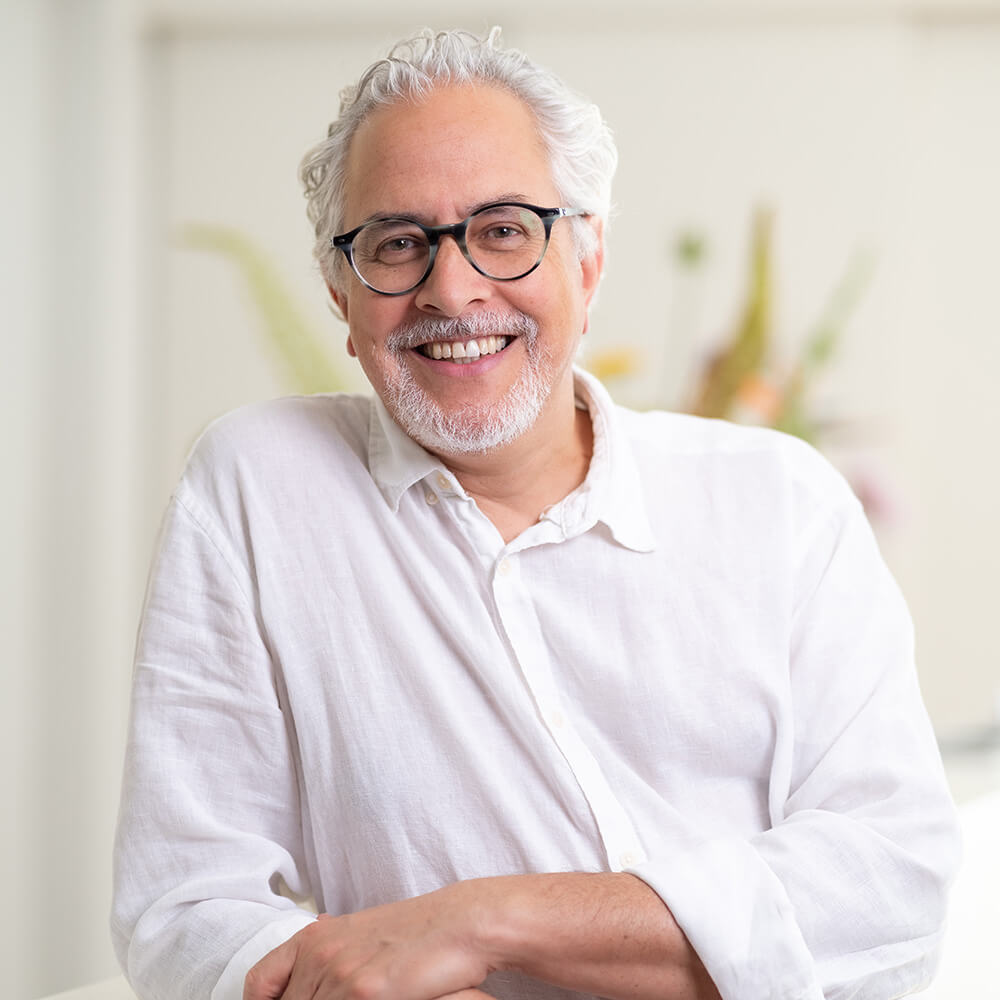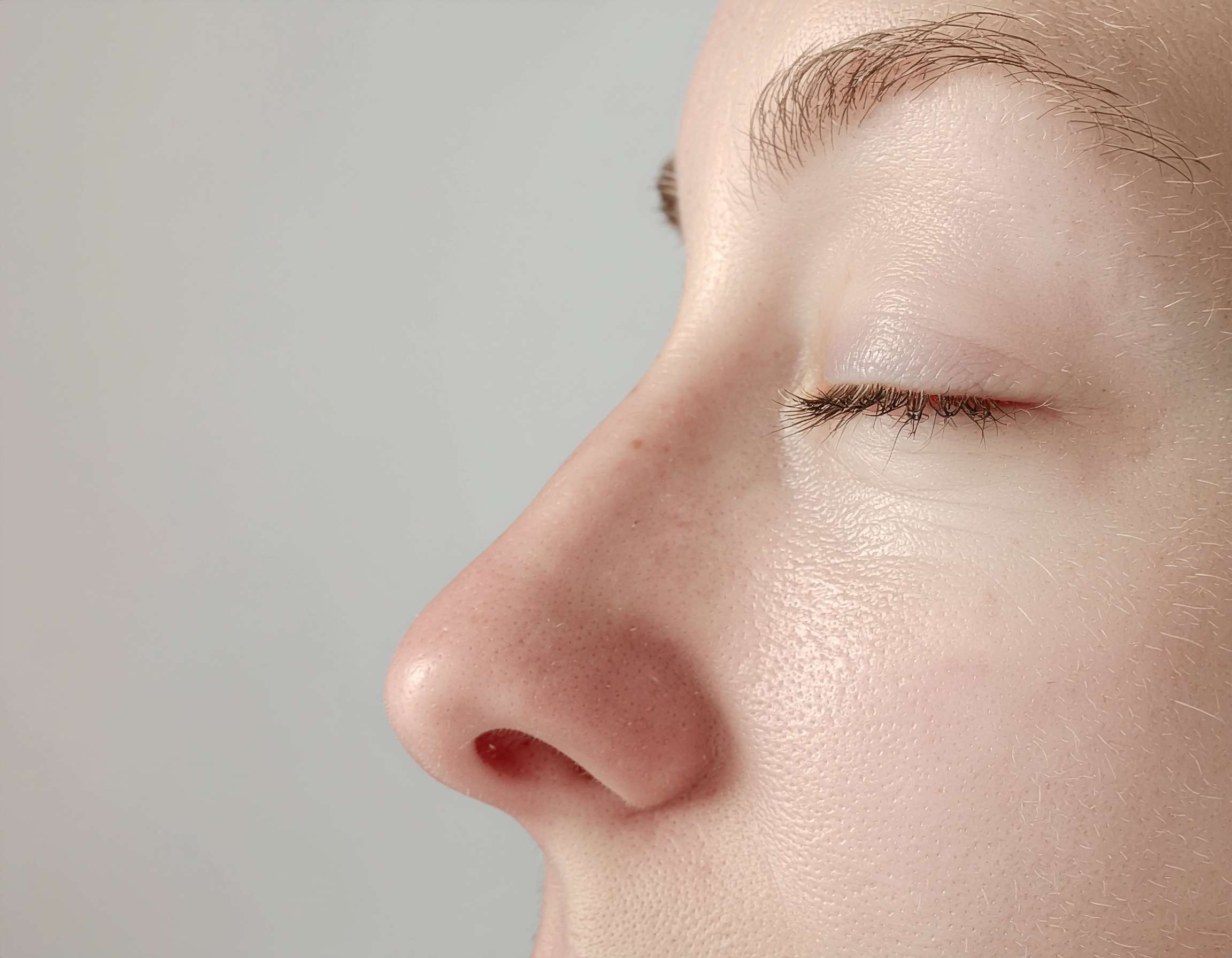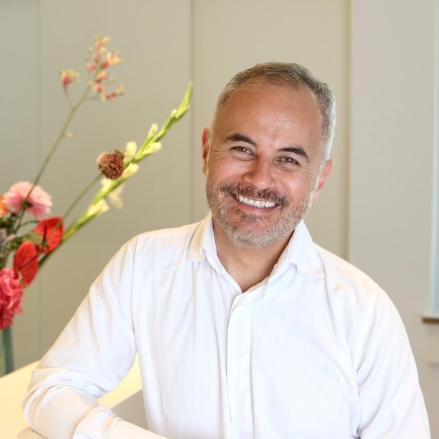Your team of experts
Facts on Rhinoplasty
| Treatment methods | Open or closed operation | /wp-content/uploads/2025/10/medical.svg |
| Treatment duration | 2-5 hours | /wp-content/uploads/2025/09/time-1.svg |
| Anaesthesia | General anaesthetica | /wp-content/uploads/2025/09/syringe.svg |
| Aftercare | After 1 week, internal and external splints are removed; bandages also used; check-ups after 6 weeks, 6 months, 1 year | /wp-content/uploads/2025/09/stethoscope-medical-tool.svg |
| Removal of sutures | Absorbable sutures used | /wp-content/uploads/2025/10/medical.svg |
| Presentable | After 8 - 10 days | /wp-content/uploads/2025/09/meeting.svg |
| Costs | Open septorhinoplasty from 7,900 € plus anaesthetic, clinic and accommodation costs Open secondary septorhinoplasty from 8,600 € plus anaesthetic, clinic and accommodation costs | /wp-content/uploads/2025/10/coin-stack.svg |
Rhinoplasty
The nose is far more than an important sensory organ: as a defining facial feature, it affords our expressions their unique, unmistakeable character. This makes it all the more upsetting for people who feel their nose just doesn’t suit them.
Many people feel their nose is too big or too broad, while others are bothered by an obvious hump in their nose. However, rhinoplasty – also known as ‘nose correction’ or, colloquially, a ‘nose job’ – allows us to remedy such flaws and help the person in question to find a new sense of self-confidence. In doing so, we place particular emphasis on creating an aesthetically formed nose that blends in harmoniously with the rest of the patient’s face. To achieve this, we consult each and every patient in detail about their specific issues and wishes.
Often, other people don’t even notice that a nose correction has been performed because they look at a person in their entirety. At Central Aesthetics, we make patients aware of this fact so that, if they go ahead with the procedure, they have realistic expectations of the results.
In our practice, we offer both open and closed rhinoplasty as well as minimally invasive methods. Treatments using hyaluronic acid or special sutures are perfect alternatives for patients hoping to make minor adjustments to their nose, allowing them to achieve their desired results without surgery.
Frequently asked questions on Rhinoplasty
What does rhinoplasty involve?
Before the rhinoplasty procedure, we hold a comprehensive consultation with each patient. In this meeting, the surgeon answers your questions, conducts an initial examination and, working together with you, identifies the appropriate treatment method for you.
Rhinoplasty is carried out under general anaesthetic with additional local anaesthetic. In the first step, the surgeon makes a series of small incisions at the bridge of the nose and inside the nose. This allows them to lift the soft tissue mantle and inspect the specific structure of the patient’s nose. The surgeon then disconnects the septum in order to straighten it as necessary and also to remove cartilage, which can be prepared and re-used depending on the treatment method selected.
After correcting the nose, the surgeon once again checks the bones, the position of the tip and also the width of the nose. The incisions made are closed using absorbable sutures, which means they don’t have to be removed. In the final stage, the surgeon places small silicone tubes inside the nose to support it. Plaster strips and a splint support the nose from the outside. Both the silicone tubes and the splint are removed after one week. The removal procedure is quite different to that for nasal tamponades – and is far less unpleasant.
How long does a rhinoplasty procedure take?
The time required for a nose correction operation is different for every patient. Depending on the surgical technique used, the desired outcome and the condition of the nose, the surgery can take anything from 30 minutes to 6 hours.
Is there any way of seeing the results of rhinoplasty in advance?
During the consultation appointment, we’ll create a computer simulation of the prospective surgical results. It’s for this reason that you need to explain your wishes precisely to the doctor. The happier a patient is with the computer simulation, the more likely they are to feel comfortable with the actual results of the procedure.
However, as a patient, it’s important that you realise the computer simulation does not represent a guarantee: instead, it serves to guide the surgeon to make sure they can implement your hopes and wishes as best they can.
What imperfections can be corrected in nose correction surgery?
Rhinoplasty can be used to remedy a variety of malpositions. For instance, the length and longitudinal axis of the nose can both be corrected. Depending on the patient’s wishes, we can narrow the tip of the nose, realign a hump in the nose or add a certain elegance to its shape.
In any corrections we perform, securing the core functions of the nose is our top priority. For this reason, we take the utmost care to ensure that any rhinoplasty we perform does not impair the patient’s ability to breathe. In fact, in many cases our nose corrections actually make it easier for patients to breathe.
Will my health insurance cover the costs of rhinoplasty?
As our services are not covered by health insurance schemes, statutory health insurance funds usually won’t bear the costs of rhinoplasty.
What is minimally invasive rhinoplasty?
At Central Aesthetics, we offer various forms of minimally invasive rhinoplasty. We usually use hyaluronic acid to realign a hump in the nose, injecting the substance at specific locations on the nose to achieve the desired shape.
Furthermore, there is also the option to correct the shape of the nose with special sutures. In this method, we suture in a specific pattern under the skin in order to narrow or shorten the nose, or to alter its shape.
How long does minimally invasive rhinoplasty take?
Nose correction using hyaluronic acid or sutures generally takes around 20–45 minutes. The precise treatment time depends on the complexity involved and your desired end result.
How long do the results of minimally invasive rhinoplasty last?
The effects of a correction using hyaluronic acid last around 12–18 months, after which time a further correction can be carried out. Rhinoplasty using sutures generally achieves long-lasting results.
At Central Aesthetics, we also combine minimally invasive methods with minor operative corrections. This allows us to ensure that the results last – without the risks associated with general anaesthetic.
What imperfections can be corrected in minimally invasive rhinoplasty?
We perform nose corrections with hyaluronic acid to correct humps in the nose and adjust the nose’s length. This method can also be used to adjust the nose’s longitudinal axis, making it appear narrower and slightly lifted.
Rhinoplasty using sutures is primarily suitable for lifting the tip of the nose or narrowing its shape. It can also reduce the length of the nose.
Whatever method we use, we take into account the proportions of the nose and its individual components. This allows us to ensure that the corrected nose has a harmonious overall appearance.
When can I get back to everyday life after minimally invasive rhinoplasty?
The recovery time following minimally invasive rhinoplasty depends on the technique used. However, most of our patients are completely presentable again within a few hours or days of the procedure.
Rhinoplasty using hyaluronic acid usually does not involve any recovery time at all – you’ll be able to fulfil your social obligations as normal soon after the treatment. Any initial redness or swelling will usually fade of its own accord within a few hours.
Rhinoplasty with sutures leaves behind tiny wounds in the skin of the nose, which we close up with fine sutures. We also apply an adhesive bandage for added protection. This can be removed after a few days.
What materials are used in minimally invasive rhinoplasty?
We primarily use hyaluronic acid for minimally invasive rhinoplasty. This serves as a filler, reinforcing or lifting specific areas of the nose. What’s more, hyaluronic acid can also be used to correct the longitudinal axis of the nose. Another minimally invasive method is rhinoplasty using sutures. In this method, we usually use non-absorbable sutures in order to achieve long-lasting results. Suturing the nose in precise locations makes it possible to narrow or shorten the nose.
Is minimally invasive rhinoplasty painful?
Nose corrections are almost completely painless for our patients. The upper part of the nose is generally relatively insensitive, meaning that hyaluronic injections in this region are near painless. However, the tip of the nose and the tissue that connects it with the upper lip is far more sensitive. For this reason, we mix a local anaesthetic in with the hyaluronic acid injected in these areas. Numbness will develop after the first injection has been administered.
When is minimally invasive rhinoplasty better than surgery?
Minimally invasive rhinoplasty is particularly suitable for patients who only wish to make minor changes, or who are afraid or anxious about an operation. The costs of such methods are also lower than surgical procedures. Whether minimally invasive rhinoplasty is a viable option depends entirely on the patient’s desired outcome. Of course, here at Central Aesthetics we’d be happy to advise you on which method would best allow you to achieve the results you want.
What does rhinoplasty aftercare involve?
After a nose correction procedure, it’s important to protect the nose for a while. You should avoid burdening the nose in any way at first. It’s also important that you clean the nose well to facilitate breathing – though any splints must remain in position to ensure the nose is stabilised. Beyond this, there are no major aftercare requirements, and you can shower as normal following rhinoplasty.
Can aesthetic rhinoplasty be combined with a nasal septum operation?
An aesthetic nose correction can easily be combined with a nasal septum operation – in fact, in many cases there’s good reason to do so. Realigning the septum allows us to harvest cartilage that can then be reused for an aesthetic nose correction. This allows us to underpin the nose’s tissue, for instance, without having to take cartilage from other parts of the body. Nowadays, it’s common practice to combine aesthetic rhinoplasty with an operation to correct the septum.
Can rhinoplasty be carried out without tamponades?
At our practice, we only use tamponades in the event of heavy secondary bleeding. Instead, we usually use small silicone tubes that ensure the patient can breathe unhindered by any blockages. Unlike tamponades, silicone tubes do not become attached or encrusted – and also do not cause any further bleeding. As a result, removing the silicone tubes is far easier than the more conventionally used tamponades.
What is the difference between surgical and minimally invasive rhinoplasty?
We usually perform surgical nose corrections under general anaesthetic. In such cases, we use either an open or closed surgical technique. Both methods can result in severe swelling and bleeding. Patients remain in the clinic overnight following the procedure. They are then fitted with a stabilising splint, which stays in place for a week.
Non-operative rhinoplasty is performed as an outpatient procedure and lasts about 20–45 minutes. In doing so, we either use hyaluronic acid or special sutures introduced via tiny incisions in the skin. In hyaluronic acid treatments, we use extremely fine needles to inject the acid. This allows us to avoid swelling, severe pain and scarring.
For how long after the operation will swelling and bruising be visible?
The time that wounds take to health after rhinoplasty surgery differs for every patient. Generally speaking, any bruising and swelling should fade over around 8–10 days to the point where it can easily be covered. However, the final result of the operation can only be evaluated after 12–18 months.
Does rhinoplasty affect the stability of a patient’s nose?
In truth, correctly implemented nose corrections can actually make the nose more stable than before. The stability of a person’s nose is a crucial factor in their breathing, which makes it a high priority for us. After operating on the nose, we provide added external stability in the form of an external splint, as well as attaching a silicone splint to the inside of the nose.
Start your journey with us here

Reviewed by Dr. Robin Deb
Dr. Deb is a specialist in plastic and aesthetic surgery and founder of Central Aesthetics. Thanks to his many years of expertise, the specialist has extensive medical knowledge. The information presented on this page has been personally reviewed by Dr. Deb and is based on the highest medical standards in plastic and aesthetic surgery.
Pay for treatment in installments?
Central Aesthetics
by Dr. Deb
Opening hours
| Monday | 9:00 a.m. – 6:00 p.m. |
| Tuesday | 9:00 a.m. – 6:00 p.m. |
| Wednesday | 9:00 a.m. – 6:00 p.m. |
| Thursday | 9:00 a.m. – 6:00 p.m. |
| Friday | 9:00 a.m. – 6:00 p.m. |
and by appointment
You are currently viewing a placeholder content from Default. To access the actual content, click the button below. Please note that doing so will share data with third-party providers.


